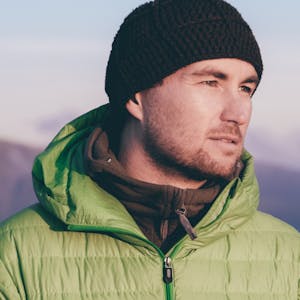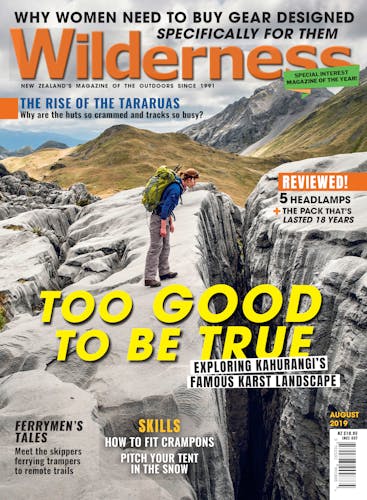Dennis Radermacher undertakes a photographic exploration of the Mt Owen massif in Kahurangi National Park
A panorama of towering limestone formations, crags, sheer cliffs and smooth mountain flanks opened up around us.
When I first came across images of the incredible karst landscape at Mt Owen, I put it right at the top of my wish list.
The terrain looked like something from a fairytale. Take the rolling limestone rockscape of Canterbury’s Castle Hill, put it into Fiordland’s Valley of the Trolls, then blow it up tenfold. The result would look something like Kahurangi National Park’s Mt Owen and the surrounding open tops of the Marino Mountains.
Our first attempt to visit Mt Owen failed due to a flooded ford – the road was under a solid metre of water. The second time we got our hopes up, I ended up in bed with a fever. Finally, after a year of failed attempts, we beat the odds on a long Christmas weekend. The Dart River was a tiny trickle under our tyres, everyone was in good health, and our adventure finally began.

We shouldered packs on Courthouse Flat and set off into a scorching hot morning. The track to Granity Pass Hut started with a relentless 1000m climb along a ridgeline that led to the base of Billies Knob. Early into the climb, my spirits hit a low. We had not been tramping for a long time, and it was showing as I puffed heavily in the relentless sunshine, feeling weak under the strain of my heavy pack.
After a steady 1000m climb, the difficulty of the track increased sharply on a 200m downclimb. The Staircase, which surprises with its lack of actual stairs, follows a steep zigzag over washed out roots that required us to slide down on our backsides in places. Eventually, the track levelled off and we found ourselves walking in the narrow, dried-out bed of Blue Creek.
As we closed in on Granity Pass Hut, dense bush slowly gave way to alpine vegetation. Above, naked mountain tops that had been smoothed into organic curves during the last ice age, towered majestically.
Much to our surprise, rather than the full house we expected, we found only two other trampers at the 12-bunk hut. After trading information on the latest weather forecast, track conditions and an assertive weka squatting below the hut, we said our goodbyes and moved on.
The entrance into Sanctuary Basin, 400m above the hut, is enclosed by steep flanks of rock that would have seemed ominous on a grey day.
Some tracks ease trampers into a landscape slowly, but past the rocky gates into Sanctuary Basin, the environment changed drastically. We felt we had entered a different world.

As we came around the slope of Sentinel Hill, a vast panorama of towering limestone formations, crags, sheer cliffs and smooth mountain flanks opened up all around us. It was a view to stop us in our tracks. We had arrived at our weekend headquarters.
As we set up our tent by the tarns south of Sentinel Hill, we were captivated by the play of light on the karst landscape before us. Over the next few days, we would watch the landscape change as the sun followed its lazy midsummer arc across the sky. Wind and clouds shaped the light that danced across the canvas of the Marino Mountains. Lengthening deep shadows made the summit of Mt Owen seem impossible to reach, while the flat light after sunset made it look like a walk in the park.

After our first night, we woke to strong winds chasing dense cloud across the sky but calm conditions prevailed on the ground. Our climb of Mt Owen began with a few tricky spots where deep crevices near some tight squeezes along narrow ledges caused a few sweaty palms. Following an abundance of rock cairns, sometimes with several alternate route options, we climbed Mt Owen within two lazy hours.
The colossal rock playground on the way up presented endless opportunities for photography. We enjoyed a variety of cloudy and sunny conditions that constantly changed how this amazing landscape presented itself. It was less a matter of finding compositions than having to pick from an overwhelming choice of options.
On our descent, we detoured off the worn route to explore the limestone formations. We picked a safe path and soon found an area with rocks that rainwater had carved into gothic shapes. The whole area seemed more like a movie set or a fake plastic theme park mountain.
We vowed that on our next visit we would spend more time away from established trails.
It took a few unsuccessful attempts and a tough climb to finally make it into one of New Zealand’s most photogenic landscapes. We found it almost too good to be true.
– Dennis is a professional photographer in Christchurch and teaches photography at www.heroworkshops.com








